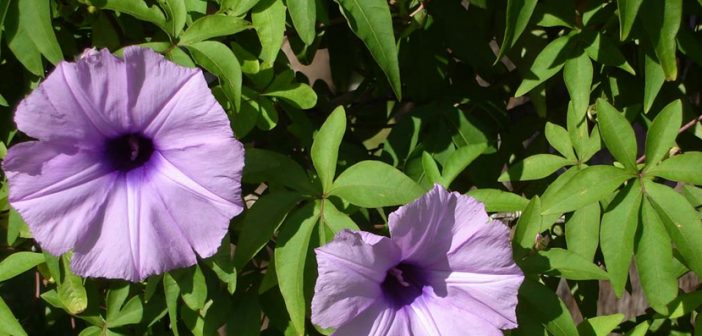Jalap Classification, Formation, Sources, Chemical Constituents, Identification Test, Adulterants and Uses + MCQ (10)
Jalap
Synonyms:-
Jalapa, Jalapae Radix
Botanical source:-
Jalap consists of the dried tubercules of Ipomoea purga Hayne, a climbing, twining plant of the family Convolvulaceae.

Geographical source:-
The plant is indigenous to Mexico and cultivated in India from where most of the commercial supply comes.
Macroscopical characters:-
- The tubercules are irregularly oblong, cylindrical, napiform or fusiform in shape, 3 to 15 cm long and 3 to 8 cm in diameter.
- The surface is longitudinally wrinkled with transverse lenticels and dark brown in colour.
- The transversely cut surface shows narrow cork, a narrow band of phloem, a circular cambium, arcs of tertiary cambium towards the centre and numerous resin cells.
- It has a smoky odour and a sweetish acrid taste.
Microscopical characters:-
- The cork consists of several layers of thin-walled tangentially elongated cells.
- The cortical parenchymatous cells contain simple and compound starch grains and cluster crystals of calcium oxalate. Numerous resin cells containing a yellowish brown resin occur in the cortex.
- The ground tissue contains very wide medullary rays and the central tissue consists mainly of parenchymatous cells containg starch and resin.
- Vessels of secondary xylem have numerous bordered pits.
Chemical constituents:-
Jalap principally contains a glycosidal resin (8 to 20 percent). Other constituents include mannitol, sugars, starch, Beta-methyl aesculetin and calcium oxalate.
Uses:-
Jalap is used as a hydragogue cathartic. In smaller doses it acts as a laxative and in larger doses it causes active purgation.
Substitutes and adulterants:-
The dried tubercules of Ipomoea simulans (Tampico Jalap), Ipomoea orizabensis (Orizaba Jalap) and also Mirabilis jalapa (Family Nyctaginaceae) have been frequently used as substitutes and adulterants of Jalap.
MCQ
1. Synonyms of Jalap
A. Indian Jalap
B. Chinese Jalap
C. Jalap aconite
D. Jalap Radix
2. Biological Source of Jalap
A. Gentianaceae
B. Solanaceae
C. Convolvulaceae
D. Liliaceae
3. Which of the following is not adulterant of Jalap ?
A. Tampico Jalap
B. Jalap Radix
C. Orizaba Jalap
D. Mirabilis jalapa
4. Which of the following is not use of Jalap ?
A. Laxative
B. Purgative
C. hydragogue cathartic
D. Anti hypolipidemia
5. Match Of The following for jalap
i. Shape. A 3 to 15 cm
ii. Length. B 3 to 8 cm
iii Diameter. C 8 to 20%
IV Glycosidal Resin D cylindrical
A. i→ D ii→A iii→B iv →C
B.i→ A ii→B iii→C iv →D
C.i→ C ii→B iii→C iv →A
D.i→ A ii→B iii→C iv →D
6. Which of the following is false sentence about Jalap ?
A. Jalap consists of the dried tubercules of Ipomoea purga Hayne.
B. Jalap is used as a hydragogue cathartic.
C. It has angular calcium oxalate crystal.
D. Numerous resin cells containing a yellowish brown resin occur in the cortex.
7. Which of the following is not characteristics of Jalap ?
A. The ground tissue contains very narrow medullary rays.
B.The tubercules are irregularly oblong, cylindrical, napiform or fusiform in shape.
C.Numerous resin cells containing a yellowish brown resin occur in the cortex.
D. The ground tissue contains very wide medullary rays.
8. Which of the following is adulterant of Jalap?
A. Smilax medica
B. Yam
C.Mirabilis jalapa
D. Mulethi
9. Which of the following is major chemical constituents of Jalap ?
A. glycosidal resin
B. Calcium oxalate Crystal
C. Mannitol
D. Beta-methyl aesculetin
10. Which of the following is Not Microscopic characteristics of Jalap ?
A.The cork consists of several layers of thin-walled tangentially elongated cells.
B. Numerous resin cells containing a Redish brown resin occur in the cortex
C. The cortical parenchymatous cells contain simple and compound starch grains and cluster crystals of calcium oxalate.
D. Vessels of secondary xylem have numerous bordered pits.
List of Successful GPATINDIAN CANDIDATES
Participate in Online FREE GPAT TEST: CLICK HERE
Participate in Online FREE Pharmacist TEST: CLICK HERE
Participate in Online FREE Drug Inspector TEST: CLICK HERE
Participate in CSIR NET JRF Mock Test
Answer Key
1. D
2. C
3. B
4. D
5. B
6. C
7. A
8. C
9. A
10. B
Reference :-
16 Edition of Trease and Evans Pharmacognosy Text Book ( Pg. No. :- )
https://www.pharmaceutical-journal.com/news-and-analysis/opinion/blogs/from-xalapa-through-jalap-to-jollop/11025205.blog
This information is taken only for education purpose.